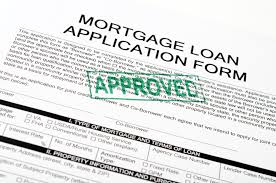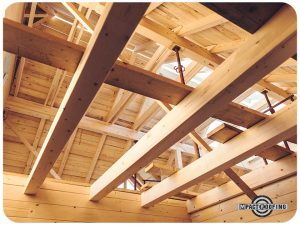What Is A Conventional Mortgage Loan in 2025?
Go Back To Previous PageGovernment programs do not directly insure conventional mortgage loans. Typically, these loans conform to specific requirements set by Fannie Mae or Freddie Mac. These government-sponsored enterprises purchase mortgages from lenders and sell them to investors, freeing up funds for lenders to offer to more qualified buyers. This helps more people become homeowners. Most people choose between 15- and 30-year terms for conventional mortgages.
government-sponsored enterprises purchase mortgages from lenders and sell them to investors, freeing up funds for lenders to offer to more qualified buyers. This helps more people become homeowners. Most people choose between 15- and 30-year terms for conventional mortgages.
There is no single set of requirements for borrowers because conventional loans encompass multiple guidelines. However, conventional loans generally have stricter credit requirements than government-backed loans, such as those backed by the Federal Housing Administration (FHA).
Conventional Loan Requirements
You must meet specific qualification standards when applying for a conventional home loan. Here’s what you need to know.
Down Payment
First-time homebuyers can obtain a conventional mortgage with a down payment as low as 3%. However, the down payment requirement may vary depending on personal circumstances and the type of loan or property being purchased.
- The down payment requirement is 5% if you are not a first-time homebuyer or make no more than 80% of the median income in your area.
- If the property you purchase has multiple units, a down payment of 15% may be required.
- If you plan to purchase a second home, you must pay at least 10% down.
- If you opt for an adjustable-rate mortgage, remember to make a down payment of at least 5%.
A mortgage calculator can help determine future monthly payments based on your down payment.
Private Mortgage Insurance
When you decide to make a down payment of less than 20% on a conventional loan, you must asked to pay for Private Mortgage Insurance (PMI). This insurance protects the mortgage investors in case of a loan default. The cost of PMI will vary depending on your loan type, credit score, and the amount you put down.
Private Mortgage Insurance (PMI) is a fee typically included in your monthly mortgage payment. However, there are other options available to cover this cost. Some buyers pay it upfront as a fee for closing costs, while others opt for a slightly higher interest rate. Deciding how to pay for PMI requires careful consideration of the numbers to determine which option is the most cost-effective for you.
Once you reach 20% equity in your home, you can ask your lender to remove PMI from your mortgage payments. The best thing about PMI is that it is not a permanent part of your loan. You won’t need to refinance your mortgage to get rid of it.
If the value of your home increases, and you reach 20% equity as a result, you can ask your lender for a new appraisal. This will allow them to recalculate your PMI requirement using the updated value. Once you achieve 22% equity in your home, your lender will automatically remove PMI from your loan, and you will no longer need to pay for it.
Other Requirements
A conventional lender will also have the following requirements.
Credit Score
You typically need a credit score of at least 620 to qualify for a conventional loan. During the application process, your lender will review your credit history to determine if you meet the requirements. If your credit score falls short, you may not be approved for the loan.
Debt-To-Income Ratio
Your Debt-to-Income Ratio (DTI) is the percentage of your monthly income that goes toward paying off debts. This ratio can be calculated by dividing the minimum monthly payments of all your debts (such as auto loans, student loans, and credit cards) by your gross monthly income.
While most conventional loans can approve up to 50% DTI, a lower DTI increases your chances of approval.
Loan Size
To obtain a conforming conventional loan, you must ensure that your loan amount is within the limits Fannie Mae and Freddie Mac set. As of 2023, the loan limit for a single-family home is $726,200. However, there are exceptions for high-cost areas like Alaska and Hawaii, where the loan limits can go up to $1,089,300.
Please visit the Federal Housing Finance Agency website to determine the loan limits applicable to your area.
What distinguishes a conventional mortgage from other types of loans?
Let’s explore how conventional loans compare to other popular loan options.
Conventional Loans Vs. VA Loans
VA loans are only available to veterans, active-duty service members, and their surviving spouses, while conventional loans are available to anyone who meets the requirements. The requirements for VA loans are similar to those of conventional loans. However, VA loans come with excellent benefits. VA loans don’t require a down payment and never need mortgage insurance.
If you’re considering a VA loan, here are some essential factors to keep in mind in comparison to a traditional loan:
- It’s important to note that you cannot use a VA loan to purchase a second home. The Department of Veterans Affairs mandates that VA loan holders reside in the house they bought with a VA loan. As a result, VA loans cannot be used for vacation homes or second homes.
- When applying for a VA loan, you must pay a funding fee. This fee is charged to taxpayers to offset the cost of the loan. However, certain groups are exempt from paying this fee. The funding fee will depend on several factors, such as your down payment, whether you’re buying a home or refinancing, and how many times you’ve used your VA loan benefit. Typically, the funding fee ranges from 1.25% to 3.3% of the loan amount.
Conventional Loans Vs. FHA Loans
There are differences in the credit requirements for conventional and FHA loans. FHA loans are backed by the Federal Housing Administration (FHA) and offer the flexibility of getting approved with a credit score as low as 500, provided you make a minimum down payment of 10%. If your credit score is above 580 (the minimum qualifying score for many lenders), you only need to make a minimum down payment of 3.5%.
On the other ]hand, conventional loans allow you to make a slightly smaller down payment of 3%, but you must have a credit score of at least 620 to qualify.
When deciding between a conventional loan and an FHA loan, it’s vital to consider the cost of mortgage insurance. If you put down less than 10% on an FHA loan, you will have to pay a mortgage insurance premium for the entirety of the loan, regardless of how much equity you have.
With a conventional loan, you can avoid paying private mortgage insurance after 11 years if you make a down payment of at least 10%.
Conventional Loans Vs. USDA Loans
While conventional loans can be obtained in all areas of the country, the United States Department of Agriculture (USDA) loans are only available for purchasing properties in qualifying rural areas. Those who meet the eligibility criteria for a USDA loan might find it more affordable than other loan options.
There is no maximum income limit for a conventional loan. However, USDA loans have income restrictions that differ depending on the city and state where you plan to buy your home. To assess your eligibility for a USDA loan, your lender will consider the total income of all members in your household, not just the individuals on the loan.
Borrowers who apply for USDA loans are not required to pay private mortgage insurance (PMI). However, they are required to pay a guarantee fee, which is similar to PMI. This fee is 1% of the total loan amount if paid upfront. Alternatively, borrowers can include the guarantee fee in their monthly payments. Typically, the guarantee fee is more cost-effective than PMI.
What Are Conventional Loan Mortgage Rates?
Interest rates for conventional mortgages change daily. Your actual interest rate will depend on your situation.
Conventional Loan FAQs
Discover the most common questions about conventional loans for potential homeowners to learn more about this type of mortgage.
Is a pest inspection required for a conventional loan?
When buying a home, your lender typically doesn’t require a pest inspection. However, if there are any signs of infestation or termite damage, your appraiser or home inspector may suggest hiring a pest expert to assess the property before closing the loan.
Can I get down payment assistance with a conventional loan?
Even with a conventional home loan, you can be eligible for down payment assistance. Some government agencies and community programs assist buyers facing financial difficulties regardless of their financing type.
How many conventional loans can I have at one time?
When it comes to the number of conventional mortgages you can have, the simple answer is “as many as you can afford.” Technically speaking, you can have up to ten traditional mortgages under your name.
However, if you’re interested in investing in real estate, you can explore alternative financing methods to purchase multiple properties without applying for conventional loans.
The Bottom Line
Conventional loans typically have lower costs than other loan types. A conventional mortgage could be your best solution if you meet credit score requirements and can afford a down payment as low as 3%.


